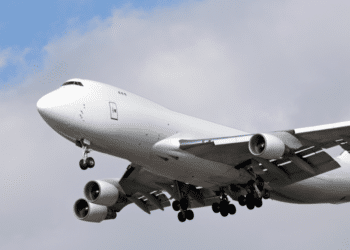Cargo continues to shift to the Middle East
IATA has not yet issued its analysis of air freight demand for the full-year 2013, but when it does, the overall result will almost certainly be that the world’s airlines will have reported cargo traffic up about 2% over 2012. Not great, but a definite improvement over the declines of the last two years. And perhaps even a harbinger of better times ahead, as year-over-year growth steadily improved during the last half of the year.

Dubai International Airport, home of Emirates, reported its December handle up 8% y-o-y to 218,000 tonnes. This pushed the airport’s full-year handle to 2.44 million tonnes, up 6.8% over 2012. However, these numbers understate the flow of cargo through Dubai, because more and more of the business – particularly main-deck freight – has moved to the new Dubai World Central Airport (DWC) for which December and full-year data have not been released.
Dubai’s neighbor, and competitor in the cargo business, Abu Dhabi International Airport, reported even stronger growth, with its 2013 cargo handle up 24.4% to 706,000 tonnes, driven by huge increases in cargo carried by home airline Etihad Airways. Etihad reported its December cargo volume up 22.5% y-o-y to 42,000 tonnes. While this looks like a very big gain, it pales in comparison to the 52% increase in November. And for the full year, Etihad reported cargo volume up 32% to 487,000 tonnes. Commenting on the strong performance, the carrier said: “Established markets such as China, Hong Kong and India were top performers, in addition to expanding markets such as the Netherlands and the United States.”
Meanwhile, Saudia Cargo, which not that long ago appeared to have a fairly lethargic approach to the cargo business, has sharpened its focus, and the results are impressive. The Jeddah-based carrier reported its 2013 cargo volume up 8% to 558,000 tonnes over 2012 (and it is worth pointing out that 2012 volume was up about 20% over 2011).
And finally, while Turkey may or may not be a part of the “Middle East,” it is not far away, and shares the blessing of being close to the crossroads of Asia, Europe, and Africa. It also shares the kind of growth reported by Etihad, with cargo volume up 20.1% in 2013 to 565,000 tonnes.
In addition to their fortunate geographic location, these carriers also share a commitment to cargo as a necessary and valuable part of overall performance. They also have rapidly expanding fleets of modern cargo-friendly widebody passenger aircraft like 777-300ERs and A330-300s, supplemented with growing freighter fleets.





